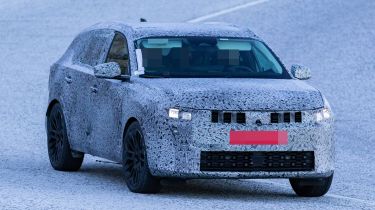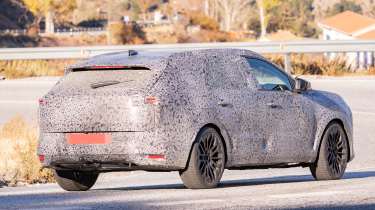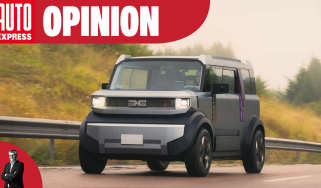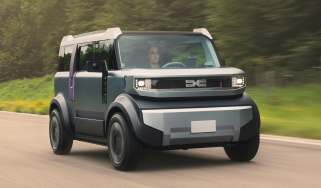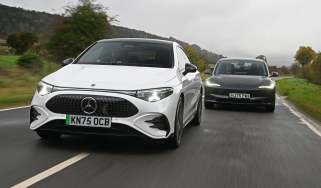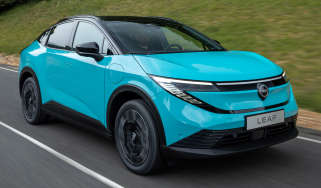New Dacia C-Neo preps for its big family car fight in 2026
Romanian firm looks ready to take on a new sector with all-new petrol-powered family car
Dacia is about to expand its range of models with a new crossover that’s known internally as C-Neo.
The production car might have a different name when it’s unveiled in spring 2026 ahead of going on sale later in the year, but we know it’ll provide Dacia with a C-segment rival to the likes of the Skoda Octavia and Volkswagen Golf.
We first got a whiff of the C-Neo back in 2022, but now we’ve been given our first look at the new Dacia thanks to some spy shots taken in Europe. Despite this being an early test car covered in camouflage, some key design elements of the C-Neo are already obvious.
We can spot the outline of Dacia’s family face - a rectangular light signature that blends into the grille that carries Dacia’s badge. It’s quite an angular front-end design, which goes with Dacia’s recent repositioning as a more robust, adventure-ready brand.
Although not quite as rugged as the Duster and Bigster, the C-Neo gets some protruding wheelarches, although we’ll have to wait and see if they’re made from the company’s recycled ‘Starkle’ material, as they are on the SUVs.
The overall profile of the C-Neo looks somewhere in between an estate and SUV. The rear window is quite sloped to give a sportier look, but if the new car is classed as a jacked-up estate, then we’ll expect a decent amount of luggage space back there.
While we can’t see an exhaust sticking out the back, we do know the C-Neo will come with internal combustion engines also used by the Duster and Bigster.
Speaking exclusively to Auto Express, Dacia’s then Chief Executive Officer Denis Le Vot previously said that the company is sticking to its plan – announced at Renault Group’s capital markets day in November 2022 – to add cars beyond the Bigster. “What we’re doing right now is going around all of the ideas because we intend to launch one, maybe two more models that will be C-segment in size,” he said. “They would be based on the same platform – CMF-B, period!”
That choice of architecture is only to be expected, because Dacia has already announced that its plans for the rest of this decade are intrinsically linked to CMF-B – the same platform that also underpins the Renault Clio and Captur, along with the Nissan Juke. Building larger models on the chassis allows Dacia to tap into Renault Group economies of scale, particularly since its focus remains on efficient combustion-engined models instead of a switch to EVs.
The reliance on CMF-B makes it relatively easy to predict the technical make-up of a new Dacia family car. In base form it would feature a 1.0-litre three-cylinder turbo petrol engine producing 109bhp, but it would also be offered with a 1.2-litre petrol developing 128bhp and boosted by 48-volt mild-hybrid assistance. Further to this, there’s potential for it to use the same 1.6-litre full-hybrid set-up as the Jogger and Duster, or even the new full-hybrid 1.8-litre four-cylinder set-up, which has been launched in the Bigster.
Pricing is still some way from being confirmed, but we don’t expect it to be too far from the Duster’s starting price - which is currently £21,820. That would make the C-Neo far cheaper than the likes of the Skoda Octavia and Volkswagen Golf - both of which start at almost £30,000.
Now you can buy a car through our network of top dealers around the UK. Search for the latest deals…
Find a car with the experts

